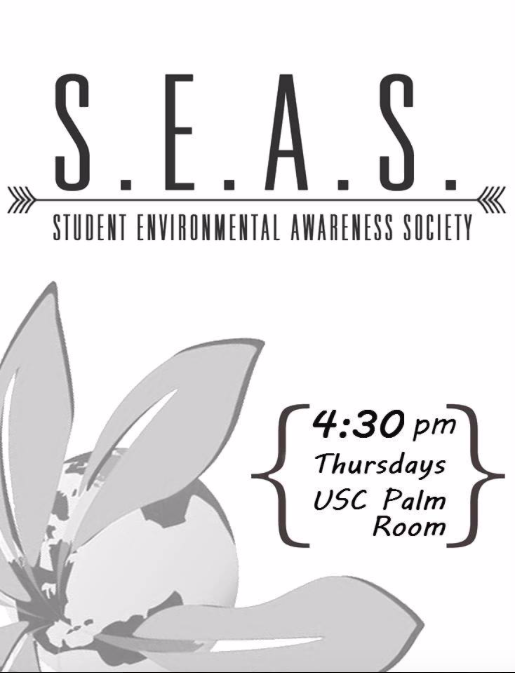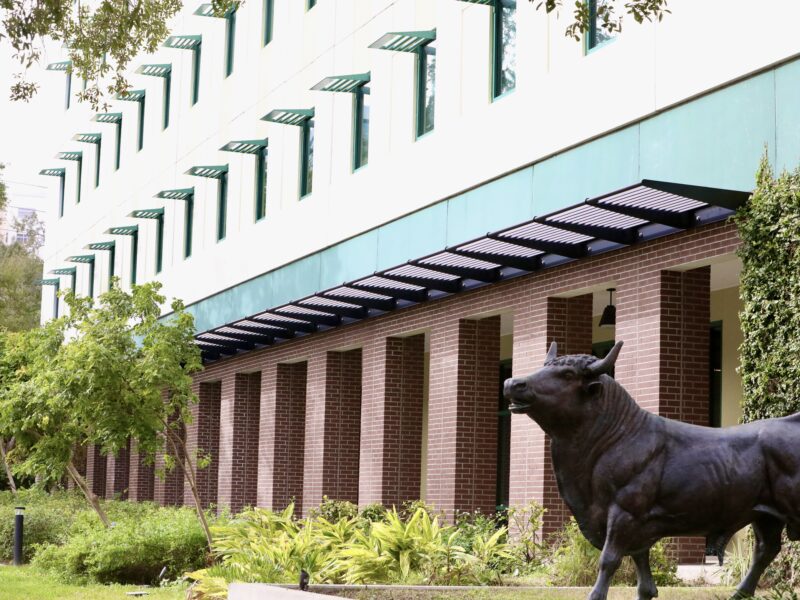
By Ayden Marrullier
Like most of my fellow students at USF St. Petersburg, I never imagined that choosing to study at this amazing waterfront facility would endanger my health and keep me away from the water.
It seems like we get news of yet another sewage spill in St. Petersburg almost every time it rains. Since I run the Student Environmental Awareness Society here on campus, I would like to take this opportunity to educate our faculty and students about how widespread and dangerous Florida’s wastewater mistreatment problems have become, and what you can do about it.
Regardless of where you come from, if you’re a Florida resident, it’s likely that your hometown wastewater utility and/or septic tanks are polluting your local waters. It’s fair to say that sewage is the most pressing water quality and supply issue in the state.
Over the past decade, 2.7 billion gallons of raw sewage were spilled into Florida waterways in 23,000 different incidences. Some of the worst offenders include St. Petersburg, of course, Sarasota County (800 million gallons in the past three years), and Brevard County (22 million gallons in the 30 days after Hurricane Irma, after decades of other spills).
Six plants in Miami-Dade and Broward counties still discharge about 188 million gallons of partially treated sewage per day into coral reefs, which is essentially a concentrate of phosphorus and nitrogen that provides a “superfood” for algae that smothers corals.
Miami-Dade also estimates that roughly 70,000 septic tanks are submerged or will be submerged by 2040, thanks to sea level rise.
Meanwhile, in Charlotte and Lee Counties, about 75 percent of roughly 200,000 septic tanks are submerged during the wet season, which means that the fluids full of concentrated nutrients are flowing into local waters during the time of the year that the harmful algal blooms typically show up. Raw and partially treated sewage provides a “superfood” for Red Tide and Cyanobacteria blooms, too.
We all now know the reek of Red Tide and sewage in Tampa Bay. We can thank one of Florida’s wastewater infrastructure systems for that. Here, as in many places, we lack the capacity to serve the existing population and fail to remove nutrient pollution sufficiently to safely reuse the water for irrigation, hydrating aquifers and ecosystems, much less treat it to safe drinking water levels.
Meanwhile, the algae blooms fueled by our nutrient pollution and pathogens from our excrement are destroying the natural attractions that lure so many to this great state.
About 900 people move to Florida per day, and we host more than 100 million visitors annually. This exponential growth is overtaxing our water sources and the wastewater treatment facilities that should protect them. Florida extracts more and more water from deep aquifer sources — referred to as fossil water — while wastewater production increases volumetrically because of this population explosion. In short, we are contaminating our waters with water that could be cleaned to meet the growing demand for safe drinking water.
Over spring break, some of us had the opportunity to travel to the state capitol with the American Water Security Project to advocate for the state’s water. We met with more than 30 legislators to express our deep concerns about Florida’s failing wastewater infrastructure. We lended our support to bills that should significantly stem the tide of sewage, which thankfully are progressing through the state legislature.
House Bill 141, introduced by Rep. Randy Fine, R-Palm Bay, as well as Senate Bill 214, introduced by Sen. Joe Gruters, R-Sarasota, require written notices to be sent to county residents every time a raw sewage spill occurs. The letters must provide the contact information for the elected officials in charge of managing the utilities. And the proposed law would levy fines of $2 to be spent by municipality facilities, on infrastructure, for each gallon released.
Sen. Debbie Mayfield, R-Melbourne, and Rep. Holly Raschein, R-Fla. Keys, have also introduced comprehensive water quality improvement bills. If they become law, it would incentivize cities and facilities to invest in infrastructure issues so that sewage issues can be addressed and fixed. But legislators need your support to make sure the strongest components of the bills and ample funding make it through the legislative process.
Please let them know that you were one of the young voters that turned out in record numbers last fall, and that you demand new laws that hold wastewater utilities and politicians accountable to Florida water and to provide ample funding assistance for wastewater infrastructure improvements.
As a final note, if you interested in learning more about sewage issues particularly in St. Petersburg, come to The Reef at 6 p.m. on Wednesday, April 17, to see a showing of Dr. Shuler’s ‘St. Pete Unfiltered’ in celebration of Earth Week.



You forgot to mention that by the late 21st Century, when my grandkids are my age, the Everglades will be a shallow bay. Although, I once had an environmentalist tell me “There’ll always be an Everglades… it’ll just be a different Everglades.”